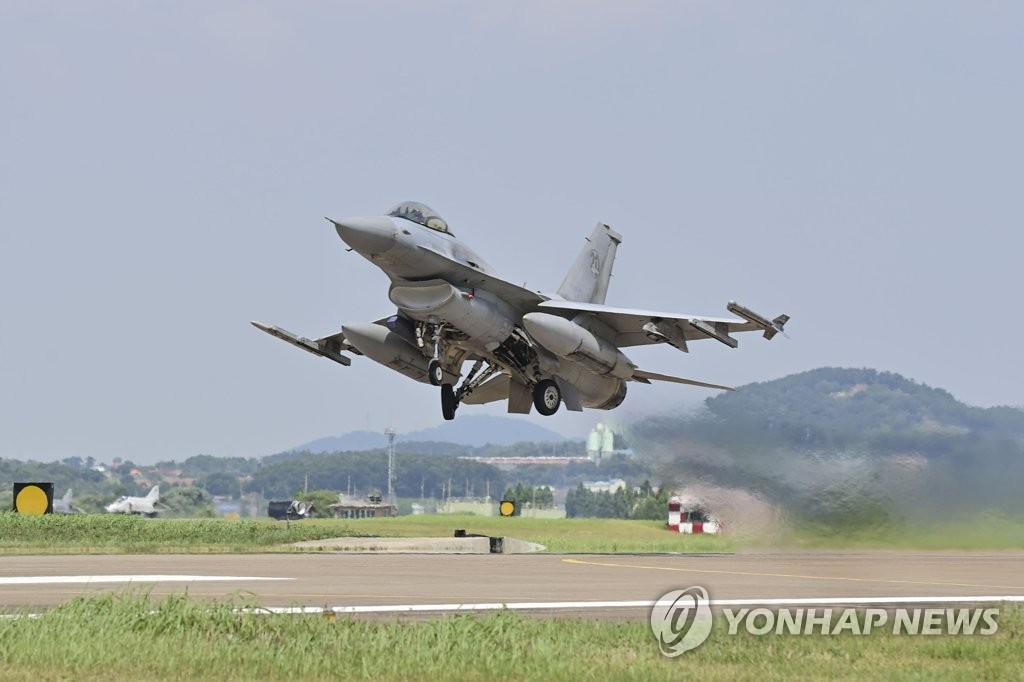- California Assembly OKs highest minimum wage in nation
- S. Korea unveils first graphic cigarette warnings
- US joins with South Korea, Japan in bid to deter North Korea
- LPGA golfer Chun In-gee finally back in action
- S. Korea won’t be top seed in final World Cup qualification round
- US men’s soccer misses 2nd straight Olympics
- US back on track in qualifying with 4-0 win over Guatemala
- High-intensity workout injuries spawn cottage industry
- CDC expands range of Zika mosquitoes into parts of Northeast
- Who knew? ‘The Walking Dead’ is helping families connect
KF-16C fighter jet crash in Sept. caused by component entering engine: Air Force
South Korea’s Air Force said Monday a KF-16C fighter jet crash in September occurred due to a component entering the engine, causing internal damage and making the engine stall multiple times mid-air.
On Sept. 21, the single-engine fighter jet of the 20th Fighter Wing crashed at its base in Seosan, about 100 kilometers southwest of Seoul, shortly after take-off. The pilot ejected safely.
After a monthslong investigation, the Air Force said the rubber seal on the jet’s engine fan module fell off and flowed into the engine, damaging components, such as the engine blade, disrupting air flow and causing the engine to stall five times.
During the incident, the pilot managed to turn the aircraft back to base and make an emergency escape before the crash, according to the Air Force.
The Air Force said it suspects the rubber seal fell off due to faulty components, noting that it did not discover issues in the aircraft’s maintenance.
It said it has requested U.S. engine maker Pratt & Whitney and a private maintenance depot in South Korea determine the reason behind the detachment of the rubber seal. A contractor of the private maintenance depot carries out the replacement of the rubber seal after being delegated to do so by Pratt & Whitney.
With the end of the investigation, the Air Force plans to inspect the rubber seals of its other KF-16s and some F-15Ks with the same engine, and resume flights of the aircraft in stages after their inspection.
The Air Force had grounded some 150 fighter jets with the engine after the accident.












